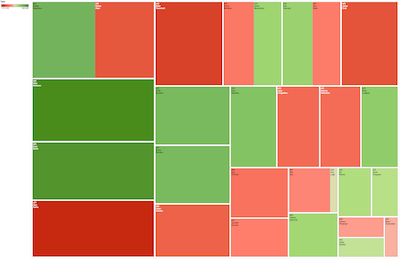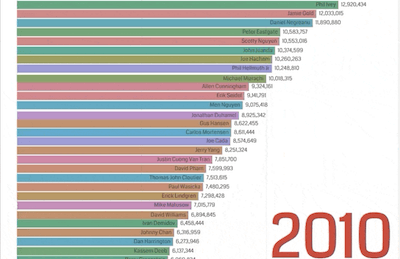
If you’re new to poker, one phrase you’re going to hear a lot is “bankroll management.” And if you’ve been playing poker for a while yet haven’t heard of this term, you need to listen now, as it should hugely increase your chances of winning while you play. All the top poker pros use bankroll management, and while it’s not the most interesting of subjects, it really is something that every player must understand.
On this page, we’re going to be providing you with a complete guide to poker bankroll management, going through everything from what exactly poker bankrolls are, through to how you can go about protecting your bankroll when you play. So, if you’re looking to have poker bankroll management explained from all angles, keep on reading!
What is Poker Bankroll Management?
The most basic question to answer is this: what exactly is bankroll management? Well, it has nothing to do with your strategy on the table, and instead refers to the way in which you manage your available finances.
Your bankroll is the amount of money you have available to play with. This can be a combination of the money in your online poker account, as well as money elsewhere that has been earmarked for use at the poker table. Your bankroll is not, however, all your money added together. You must leave money for bills and other essential expenses out of your calculations, as you should never be gambling with money you can’t afford to lose.
Bankroll management is the process of managing the aforementioned bankroll, and it’s really simple to understand – although there are more advanced poker bankroll management tips that more experienced players can investigate and use. We have to be honest – poker bankroll management isn’t exactly the most exciting of topics, but you have to get to grips with it if you want to become the best poker player possible.
Why Use Bankroll Management?

The next thing to look at are the reasons behind using bankroll management. The main one is this: by using bankroll management, you’ll ensure that you always have money left over for another day. Essentially, it prevents you from wasting all your money in one session, as many inexperienced poker players will often do. There’s not much worse in the world of poker than having to deposit yet more money into your account, and bankroll management will stop you having to feel this disappointment as much.
Bankroll management also forces you to be a more conservative player. By this, we mean that it forces you to play in a more reserved way and not make risky bets. While free-flowing, aggressive poker provides a huge rush, it’s rarely the way to go. The more successful players generally play tight poker, but then become more aggressive when they have a strong hand. This minimises the losses, but maximises the amount of money they make from winning hands – something that should be every player’s goal.
It should be noted that learning about bankroll management in poker is a transferable skill. This is because all other gamblers, from those betting on sports through to slots players, can also benefit from understanding the principles of bankroll management. So, if you’re a fan of various types of gambling , bankroll management is even more useful to understand!
How to Build a Bankroll
Before looking at how to manage a bankroll, it’s important to look at how you can build one. There are two main ways to do this, and the first is simple: get out your credit card and make a deposit. Don’t just deposit a random amount however, but instead think how much you’re going to need. If you’re just going to deposit $10, that’s fine, but be aware that you’ll be restricted to playing at the lowest stakes. Alternatively, there’s no need to deposit thousands if you’re only planning on playing $0.01/$0.02 cash games. In general, most new players will find that around $100 is a decent starting balance.
The other way to build a bankroll is via freerolls . These are free tournaments offered to players, and they often have prizes attached to them, albeit small ones. If you’ve got the patience to grind it out in low-paying freerolls for a while, you could find your bankroll slowly increasing. It’s something that is incredibly tough to do, however some professional players have managed to start their careers this way, including Annette Obrestad .

It should also be said that those looking to reach the pinnacle of the game will generally need some seriously big bankrolls, in order to be able to afford the huge buy-ins. Many talented poker players looking to break through will allow others to take stakes in them, so that their bankroll is big enough to enter big tournaments. For example, someone might pay 10% of the entry fee for a player, however they will then be entitled to 10% of everything they manage to win.
Regardless of the way in which you build your bankroll, it is vital to keep your poker bankroll separate from the rest of your money. The easiest way to do this is by keeping your poker bankroll in a poker account – or accounts, if you play at more than one site – and having the rest of your money in your bank account. It’s vital to keep these separated as it removes the chance of you dipping into your savings on a whim, which could then lead to financial problems. There’s no reason to ever spend money you need for bills and other expenses on gambling, regardless of how likely you think you are to win it back.
Correct Bankroll Management for Cash Games
Okay, so you’ve built up a decent bankroll. How do you then decide how much to spend? Well, it really depends on if you are playing cash games or tournaments.
If you choose to play cash games , the basic rule we recommend is this: always have at least 100x the buy-in. You can calculate the buy-in by multiplying the big blind by 100. So, if you are looking to play in a $0.05/$0.10 cash game, you’ll need to buy-in for $10, meaning that you will need to have a bankroll of $1,000. It might seem like you’re leaving a lot behind, but this is the kind of cautious play the best players use. For cash games, the goal is to grow your money slowly and safely.
When it comes to cash games, you must be flexible. Sure, you can go up a level when you have the money to do so, but you must be prepared to drop down as well, should you lose some money. Being sensible enough to know when they need to drop down a level is what separates top players from those who consistently lose money.
Correct Bankroll Management for Tournaments

There are various types of tournaments , and we’ll start with the most common, which are MTTs – multi-table tournaments. Tournaments are more volatile than cash games, so you might find yourself waiting a while before winning a prize. This means that you need a big bankroll in comparison to your buy-in, so you can ride any long periods of not winning. Therefore, we’d recommend having 200 to 300 buy-ins for a tournament. So, if you want to enter a $10 tournament, you should have a bankroll of between $2,000 and $3,000. The more entrants in a tournament, the larger your bankroll will need to be in comparison to the buy-in, as you’ll have less chance of winning.
You’ll also find that most poker sites offer sit and go tournaments , which are single table tournaments. You’ve got a better chance of winning these, however the prizes won’t be as large. This means that your buy-in can be a larger percentage of your bankroll. Overall, we’d recommend having 60 buy-ins when entering a sit and go. This means that those looking to pay $10 to enter a sit and go should have a bankroll of around $600 or more. For heads up sit and go tournaments, you’ve got even more chance of winning money, so you should have about 20 to 40 buy-ins, meaning those entering a $10 heads up sit and go should have a bankroll of $200 to $400.
As with cash games, don’t be afraid to drop down stakes if you find you’ve lost some money. It’s the sensible thing to do and gives you the best possible chance of building up your bankroll again. Also, if you’re going through a losing phase, maybe start playing some tournaments with fewer players, to give yourself a better chance of getting into the money.
How to Deal with Tilt
If you’re a poker player, you’ve probably already experienced tilt, and it’s not usually something that ends up working well. For the uninitiated, tilt is the word used to describe the hyper aggressive play often exhibited by those who have just lost a big hand or suffered a bad beat. Reason no longer prevails and the player does everything they can to win back their money quickly, often making huge raises and calls with below average hands. Sometimes they can get lucky and win, but usually tilt ends in the decimation of the player’s poker finances.
So, how do you avoid tilt? Well, the most obvious thing to do is avoid bad beats in the first place, and you can help to do this by playing consistently conservative poker. Of course, bad beats will still sometimes happen, however, and you simply have to train yourself to have the mindset that they’re part of the game. Remember that while you’ve just suffered a bad beat or big loss, you’ll benefit from one at other times, so things even themselves out in the end. Just accept what’s happened, learn from it, and then move on, playing the same sensible poker as before. The ability to keep playing sensibly after a bad beat is what separates potentially great players from actual great players.
If you do find yourself simmering after a bad beat and unable to control your emotions, you need to avoid desperate moves by immediately standing up and leaving the table. If you’re playing in a cash game, this is easy. If you’re in a tournament and it’s feasible, take a break for a few hands and then come back once you’re in a better mindset. You’ll miss the chance to play in a couple of hands, but you’ll stop yourself from seriously damaging your stack due to tilt.

There’s another thing to say about tilt, and it’s this: just because you can cope with it, it doesn’t mean that others can. Therefore, be on the lookout for those showing signs of tilt, as there’s often the opportunity to make some money from them. Of course, don’t be too aggressive however – if you don’t get the cards, then don’t get involved in the hand, regardless of whether your opponent is on tilt or not.
Poker Bankroll Management Tips
Looking for some tips on how to manage your poker bankroll? If so, we’ve listed a few things to remember about bankroll management below…
1) Be Prepared to Drop Down Stakes
We’ve mentioned this already, but it’s important to reiterate: you must be prepared to drop down stakes if you find your bankroll has gotten smaller. There’s no shame in dropping down a level, or even two, in order to keep your bankroll safe. In fact, the best players are usually those who know when to drop down a level, in order to give themselves the best chance possible of building their bankroll back up again. Of course, this also works the other way too: if you manage to build your bankroll up sufficiently, don’t be afraid to start playing at a higher level.
2) Keep Track of Your Bankroll
It’s absolutely vital that you keep track of your bankroll, and you can do this by using poker bankroll management tools, such as Poker Stack. You should add in the results of every session when tracking your bankroll, regardless of whether you’ve played in a cash game for five minutes or spent five hours winning a tournament. By tracking your bankroll, you can analyse when you’ve won and lost money and see if you can work out reasons why. For example, you might notice a pattern of losing money when playing higher stakes tournaments, suggesting that you might want to lower your stakes again for a while.
3) Cut Down on Poker Expenses

This is one for land-based poker players. When you head to a casino to play poker, there’s the temptation to spend money on all kinds of things, from food and drink, through to other games, such as roulette and slots. If you want the chance to build the biggest bankroll possible, however, you should cut down on these expenses. The $10 you save by not buying some food is $10 that can go straight into your bankroll. This is especially important for low stakes players, as it’s sometimes the case that they spend more on food and drink than they manage to win!
4) Play Within Your Limits
Earlier, we said that it’s okay to go up levels when you have a large enough bankroll. The trouble is this: many people try to do so too early. By doing this, you risk either not having enough money on the table to compete, or losing too much in one session, destroying your bankroll. Everyone is tempted to up the stakes from time to time, but you really need to think about bankroll management before you make the move. You should also play within the limits of your skill. For example, if you’re brand new to the game, there’s no point playing against seasoned players for high stakes, regardless of your bankroll. Learn the ropes by playing lower stakes games first.
5) Avoid Rebuy/Top-Up Tournaments
Anyone trying to build their bankroll should absolutely avoid rebuy tournaments , as they can suck a bankroll dry in just a few minutes. While you start off just spending a few dollars for entry, you’ll soon find that you’ll need to rebuy or top up in order to give yourself a decent chance of winning. Soon, you’ve bought in three times and you end up losing three times more than you planned, completely ruining your bankroll management strategy. Instead, stick to standard tournaments with no rebuys or top-ups, as you know exactly how much you could lose from the very beginning.
6) Stay Away from Auto Top-Up

At some websites, there’s an option to top up your stack automatically. So, for example, if the maximum buy-in is $20, every time you fall below this, your stack will be topped back up to the maximum. While this sounds helpful, it really isn’t for those trying to follow strict bankroll management, as it’s incredibly easy to lose track of exactly how much you’ve lost. Instead, leave auto top-up off and you’ll then know that you need to stop gambling once you run out of money.
7) Don’t Enter Tournaments Late
You’ll notice that most tournaments allow players to enter for a while after they’ve started, and this is called late registration. A player entering a tournament late will begin with the same chips as a player registering early would begin with. However, the tournament will have already progressed by the time a late player buys in, meaning that the starting stack will be worth less than average. This immediately puts the player at a disadvantage. Instead, sign up on time, so you have the same stack as everyone else at the beginning, and give yourself the best chance to win.
Using Poker Stack for Bankroll Management
As already mentioned, you should ideally use a tool to keep track of your bankroll management, and this is exactly what Poker Stack can help you with. Our app is completely free to download and use and offers a simple, yet highly effective way to monitor your bankroll over time. It doesn’t matter which form of the game you’re playing, as Poker Stack works with them all. It even works perfectly with many other casino games too, including roulette and blackjack .
All you’ll need to do when using the Poker Stack app is enter the details – we’ll then do the rest. You’ll be able to view a multitude of graphs and other visuals showing how your bankroll has fluctuated over time, allowing you to discover trends in your play.
If you’re serious about your bankroll management, Poker Stack is an app you really need to download as soon as you can.
Popular Posts

High Stakes Poker TV Show Statistics
Vizualise all the hands of the popular TV show High Stakes Poker. Visualize statistics like total tally, Vpip, PFR as well as the number of hands, per season and for all the seasons from your favorite poker players. more...

The Poker Money Race since 1971
Watch the top 100 of every year of each Money List since 1971 from The Hendon Mob and stacked them year after year to put them in a bar chart race. See some of the greatest rises and falls in poker history! more...
Read our blog



